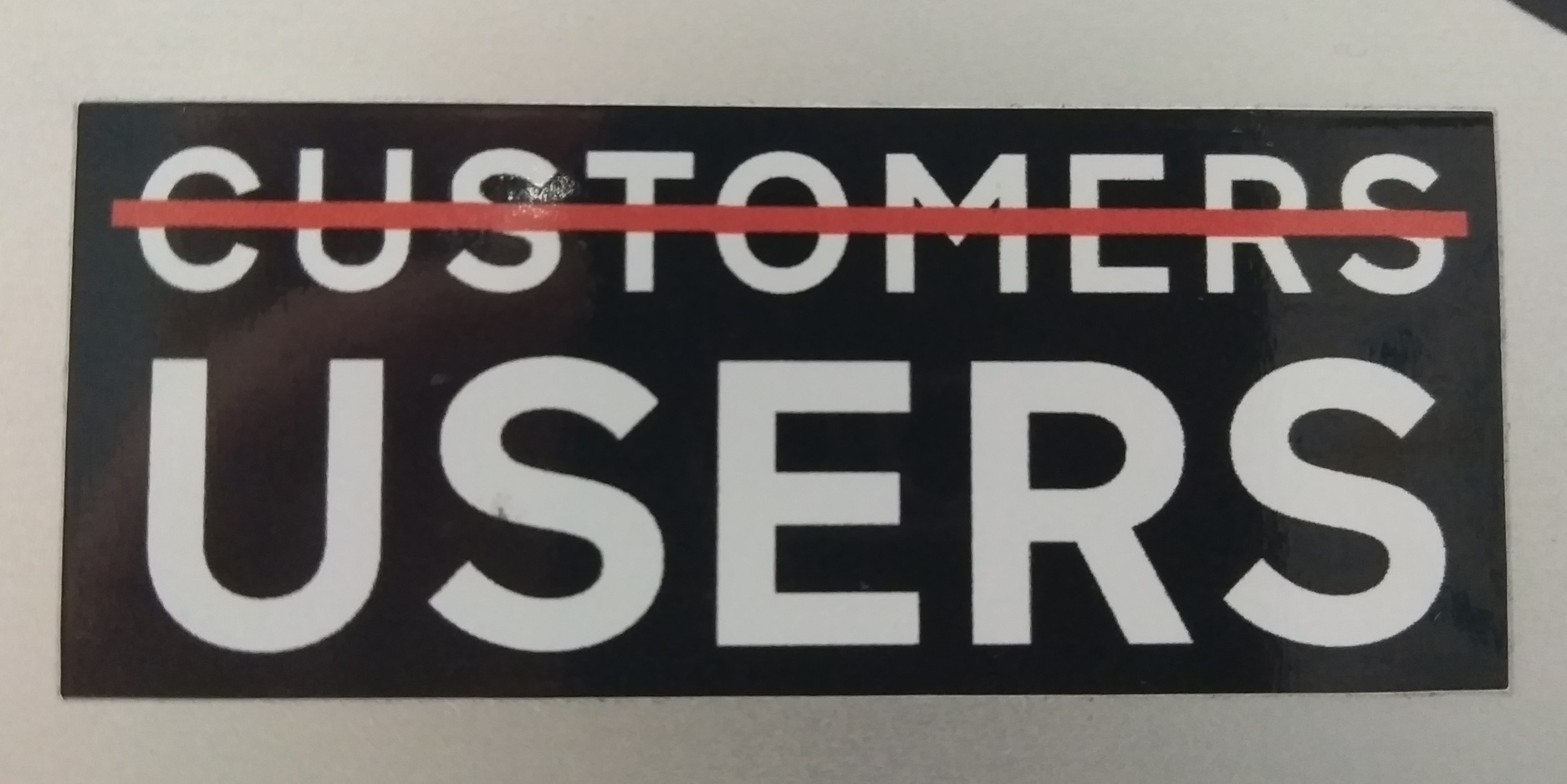Moving beyond user-centredness From designing for users to designing with people

You might have seen this sticker around. It challenges the use of the word customer in the context of design, and advocates for the word user instead.
From customers to users
What is not so widely known is that users are a relatively new thing. Back in the 1980s, there were no users: there were only customers.
That was because there was no user research. All the research done in the context of product design was market research, which tries to answer the question: will customers buy this thing? And so we were all customers back then.
But change was brewing. Universities saw the arrival of a new kind of academic, one that mixed computing with psychology and the social sciences. Their discipline was called Human-Computer Interaction. Around the same time, cutting edge design firms like IDEO started to hire psychologists and anthropologists to support their design processes.
These people became the first user researchers, and user-centred design arrived with them. People at the receiving end of products and services stopped being customers and became users. These users were asked to participate in the design process mainly as test subjects, providing feedback through activities like usability studies.
From users to people
This is where the bulk of our digital design world stands today. We design for our users, to whom we approach for information via interviews, or to ask them for feedback via usability testing sessions.
This is all good stuff. It is much better to be a user than to be a customer. But while we are busy bringing user-centredness to our departments and projects, the world of design doesn’t stand still.
Following on the path of some Scandinavian academics who wanted to democratise technology decision-making in the workplace, designers started to advocate a more active role for users. It should no longer be about designing for them: it should be about designing with them. This approach of going beyond user-centredness is often called participatory design.
Participatory design recognises that users are an active part of technical systems and services. They are not just passive recipients of these systems and services: they actually shape them through the use they make of them. This active participation is often organic, unplanned and unconscious: users are not aware of it happening.
Underpinning the participatory design philosophy is also the idea of users as experts. After all, nobody knows better than them about their goals, contexts and behaviours. We can harness this expertise to build better services, changing the organic, unconscious user participation into a more structured and aware one.
But I should stop saying users now, because participatory design doesn’t like the word users much: they prefer participants, partners or simply people.
As a user researcher and interaction designer building digital services, most of my work is still done in a user-centred, design-for-users sort of way. But I believe participatory design is what we should be aiming for.
Read more about user participation in design
Liz Sanders and Pieter Jan Stappers. 2014. From designing to co-designing to collective dreaming: three slices in time. interactions 21, 6 (October 2014), 24-33. DOI: https://doi.org/10.1145/2670616
John Vines, Rachel Clarke, Peter Wright, John McCarthy, and Patrick Olivier. 2013. Configuring participation: on how we involve people in design. In Proceedings of the SIGCHI Conference on Human Factors in Computing Systems (CHI '13). ACM, New York, NY, USA, 429-438. DOI: https://doi.org/10.1145/2470654.2470716
Susanne Bødker, Pelle Ehn, San Sjögren and Yngve Sundblad. (2000). Cooperative Design — perspectives on 20 years with 'the Scandinavian IT Design Model. In Proceedings of the 1st Nordic Conference of Computer-Human Interaction (NordiCHI’2000). Available at https://www.lri.fr/~mbl/ENS/DEA-IHM/papers/Utopia.pdf
A final note
I wrote this blogpost while working with the Digital Team at the UK Department for Education. I'd like to thank them for inviting me to write something, providing feedback and doing all they could to get this published.